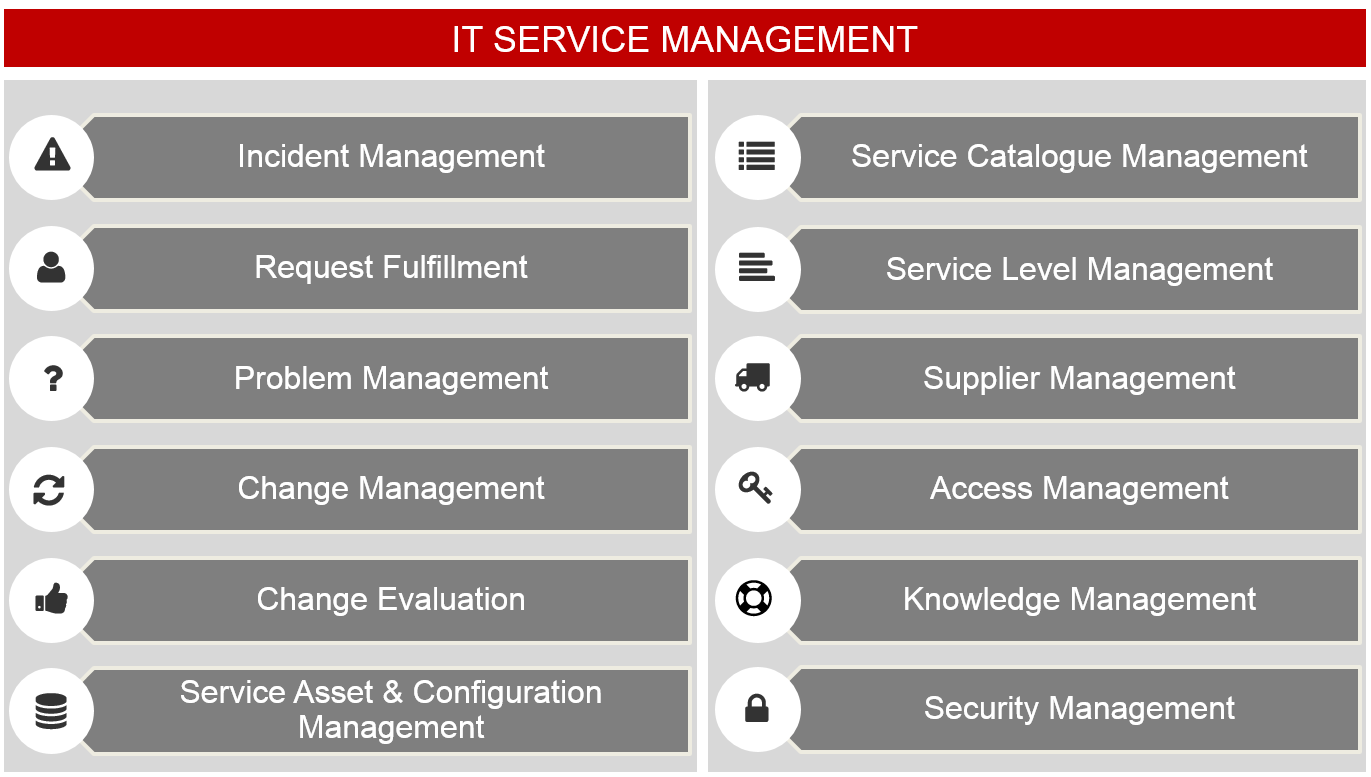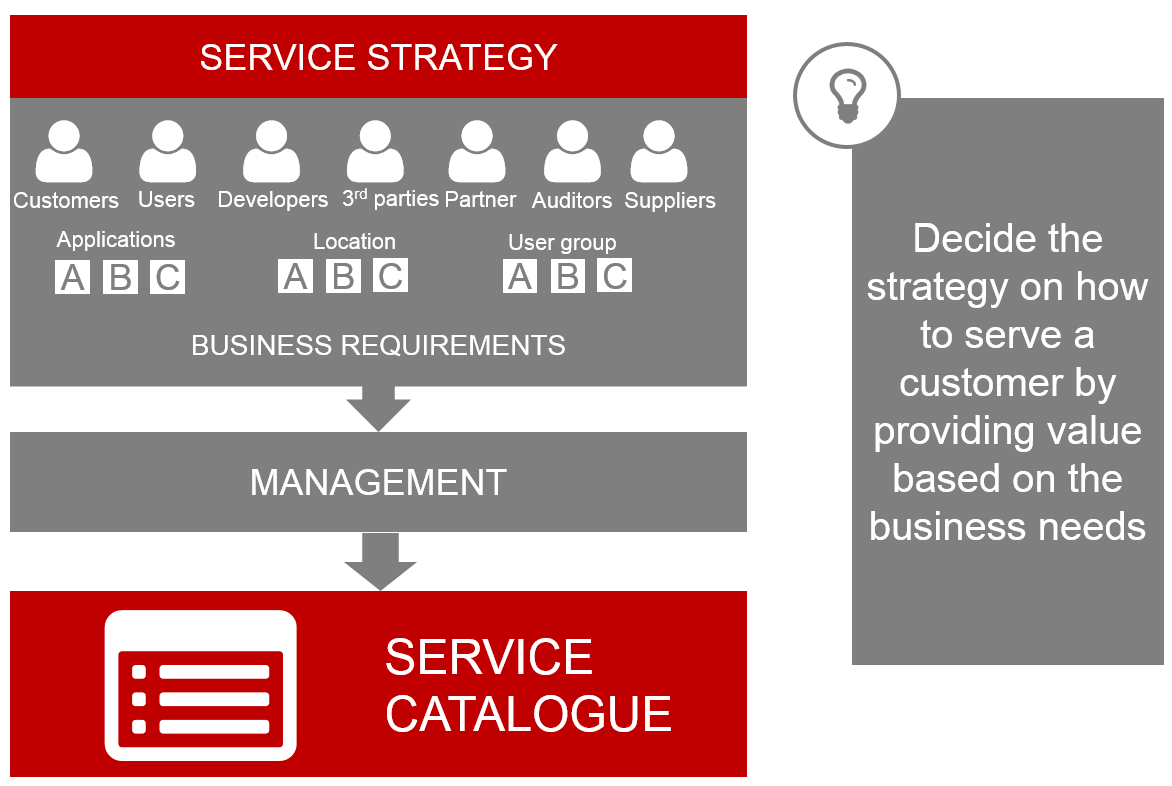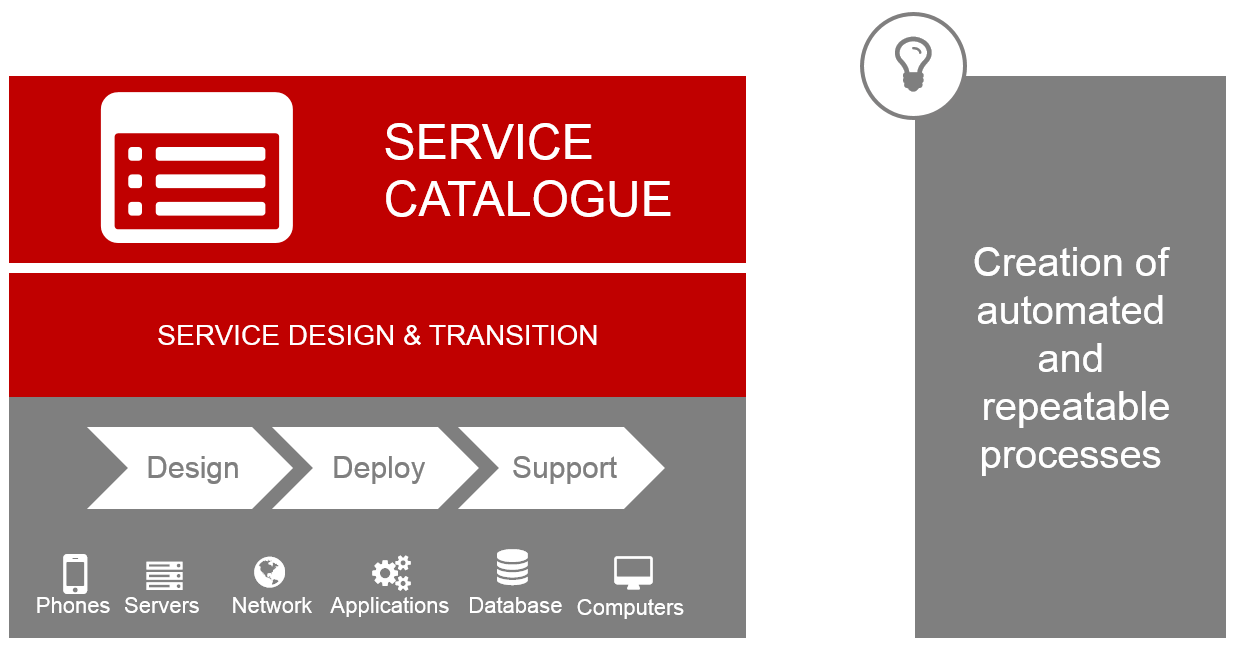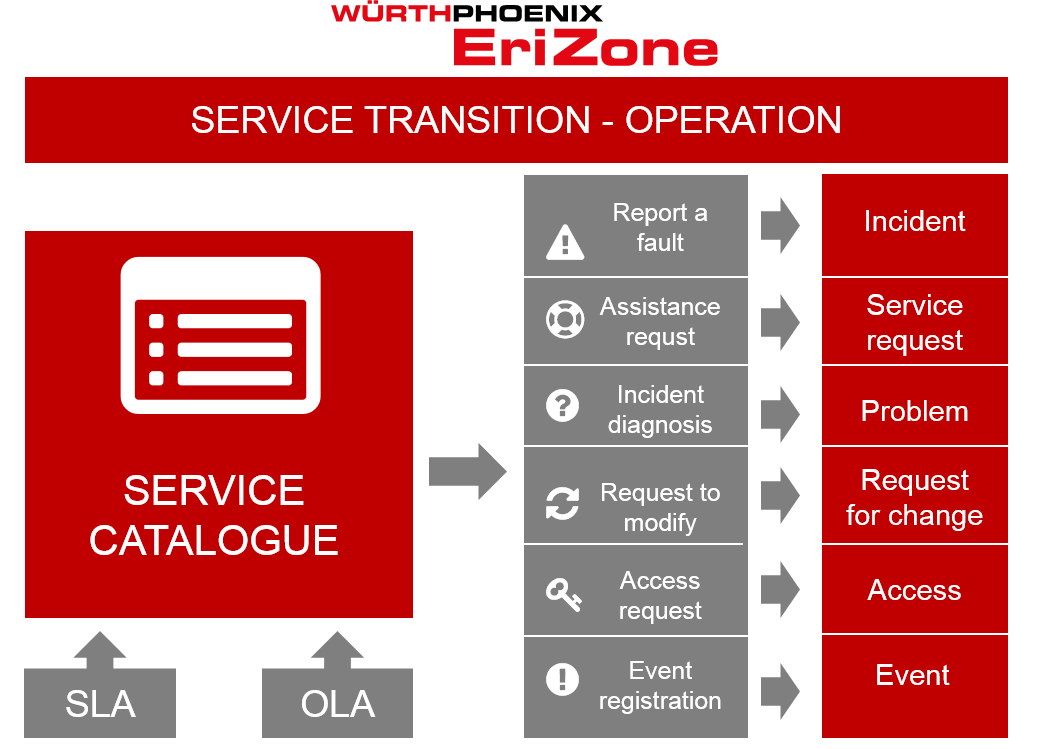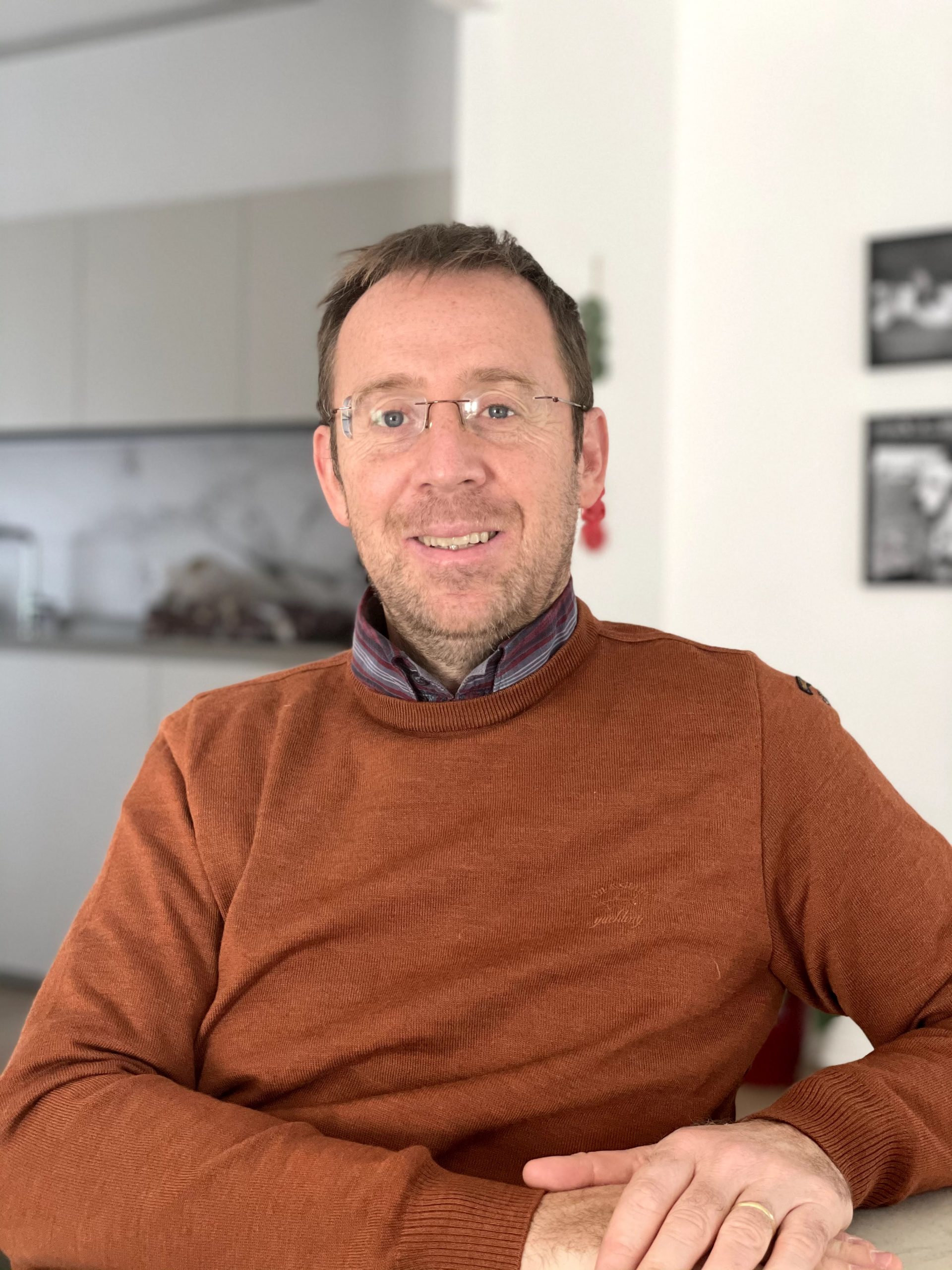How to approach an ITSM EriZone implementation
For those of you who do not know, WÜRTHPHOENIX EriZone is an open source IT Service Management solution based on OTRS. It allows to efficiently and effectively manage all the internal and external incidents and service requests as well as to improve the delivery of the IT services, by increasing the customer satisfaction.
WÜRTHPHOENIX EriZone is a complete suite that offers a range of features for the Service Desk to support all the following ITIL (IT Infrastructure Library) processes: Incident Management, Problem Management, Service Asset & Configuration Management, Change Management, Request Fulfilment, Knowledge Management and Access Management.
In this post I want to address the issue of how to approach the implementation of a new EriZone implementation according to the best practices provided by ITIL.
Usually in our life soon or later everyone has experienced to put together the various pieces of a puzzle, from a few to several hundred pieces, more or less complex. I often associate this playful activity with the ITSM implementation of EriZone:
- You must use all pieces
- The pieces should fit perfectly with one another
- It is not so important where to start, but you must start somewhere
- Having a big picture in mind can help to solve the puzzle
- You can not solve the puzzle in a single move
By following the guidelines provided by ITIL, each implementation involves four major pieces: people, processes, product and partner. All four need to be involved with the right balance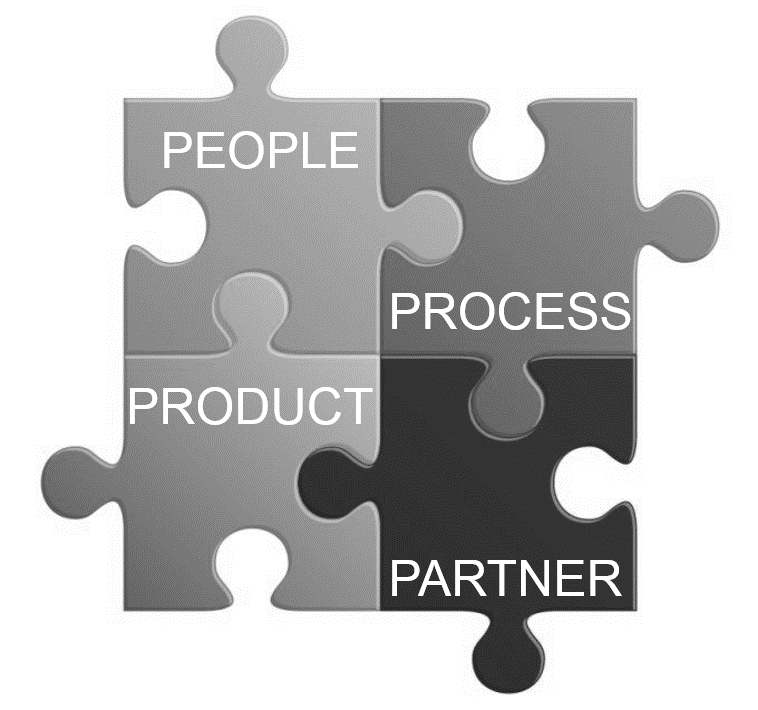
ITIL defines WHAT are the best practices, processes and roles but not HOW it can be easily achieved through the experience of a team of expert consultants in ITIL projects that can define tasks, structure, documents, KPI and especially the right means to support the delivery of the services.
So what are the key factors to keep in mind before and during ITSM implementation of EriZone? The implementation obviously requires a clear strategy and a defined approach.
Based on our experience in implementing the Service Management solution EriZone, I will try to use the 5Ws (Why, Who, What, When, Where) to provide helpful tips before you start your adventure with EriZone and ITSM.
WHY
An ITSM implementation will transform the way your business does business. You’ll have to clarify what are the challenges you face, what you want to solve and what benefits do you expect with the implementation. You need to ensure that the objectives set are in line with the vision of your business.

WHAT
What do you want to implement? What are the strategic services? How do you want to deliver them? Essential for any company is to define the strategic services to offer, and consequently adopt the right technological tools to support the delivery of those service by adding value to the business. In the specific case of EriZone the area of action is part of the Service Operation. After the service is made available to the users and customers, it must be maintained to ensure its delivery to a certain agreed level (SLA and OLA). Here are the three main areas of the service lifecycle.
FIRST PHASE – SERVICE STRATEGY
You should define and clarify the investment priorities of the service. More generally, in the Service Strategy you focus on how to help the organization to improve and develop in the long run, based on a market-oriented approach.
SECOND PHASE – SERVICE DESIGN & SERVICE TRANSITION
In the Service Design phase you design the IT services, processes, and other aspects for the management of services. While the Service Transition deals with the delivery of services required by the business at an operational level.
THIRD PHASE – SERVICE OPERATION
In the Service Operation you will work to deliver the agreed levels on the service (SLA) to the end users and to the customers (where “customers” refers to those individuals who pay for the service and negotiate the SLA).
Service Operation is the stage of the life cycle in which the services and value are actually delivered, Also the monitoring of problems and balance between service reliability and cost etc. are considered. The functions include technical management, application management, operations management and service desk as well as, responsibilities for staff engaging in Service Operation. It is in this last phase that EriZone operates.
WHO
After defining what you want to achieve from the project, you will need to identify who will be involved with the respective roles, responsibilities and accountability
- Responsible: Those who do the work to achieve the task
- Accountable: The one ultimately answerable for the correct and thorough completion of the deliverable or task, and the one who delegates the work to those responsible
- Consulted: Those whose opinions are sought, typically subject matter experts; and with whom there is two-way communication
- Informed: Those who are kept up-to-date on progress, often only on completion of the task or deliverable; and with whom there is just one-way communication
By designing a service or process is crucial that all the roles are clearly defined, so that decisions are quick and effective. You’ll have to choose a team of people with a good attitude to the service and ability to work in teams. They should think in terms of added value to the business by understanding the combination of people, processes and technology.
WHERE
Where? What areas of the organization are involved? Where do you want to intervene by adopting a solution of ITSM? I think it is fundamental to develop a business case to give to the IT the opportunity to demonstrate an awareness of the value it offers to business and especially in which areas of the organization. In fact, before starting the project you should define the opportunities, risks and benefits in terms of business, defining the same goals in business and IT. In this way also for the management, it will be easy to make decisions about investments in the IT sector. You must always define where you want to go and what you want to achieve to be successful.
WHEN
When do you start the project? Starting with a sense of urgency and sustaining the momemntum are the keys to a successful implementation. The implementation of a ITSM solution needs to be treated with the same importance and priority as any other important initiatives within the organization.
CONCLUSION
Taking again the initial metaphor of the puzzle – getting the big picture in mind and plan to achieve the goal are also vital aspects to ITSM implementation. You must identify what you want to achieve and where you want to go to have success and make measurable progress for a continual improvement.
I conclude with the last pieces of the puzzle that must be taken into account and that, however, are often overlooked:
- Define the project documentation, by including the scope, planing the time and identifying the value to the business
- Develop a plan of marketing and communication, not only within the IT department, but also to all those who use and are served by IT, to ensure that everyone is aware of what you are doing and how the implementation is going
- Learn from others through user groups, conferences, webinars and blogs. You will not be the first nor the last to work on the ITSM/EriZone puzzle, and you can always learn from the experience of others
- Develop and report business relevant and meaningful metrics to ensure that the ITSM supports the goals set by the business case
- Incorporate a continual improvement into your EriZone implementation already beginning. A continuous improvement approach will help to correct any oversights and to identify areas that need to be optimized to identify further efficiency and effectiveness
Last but not least, I’ll give you the list of the business advantages you can get by adopting the IT Service Management solution EriZone:

